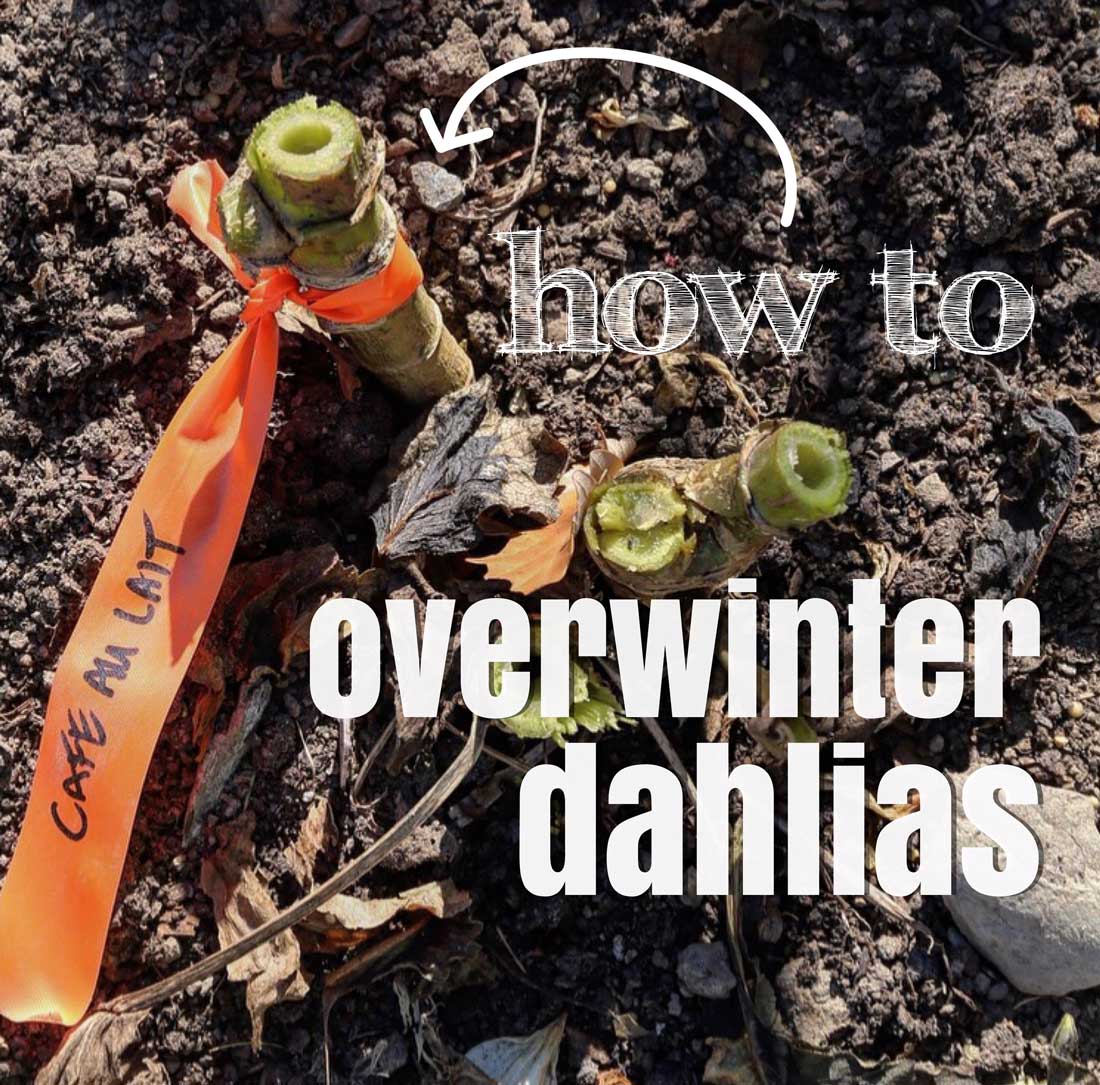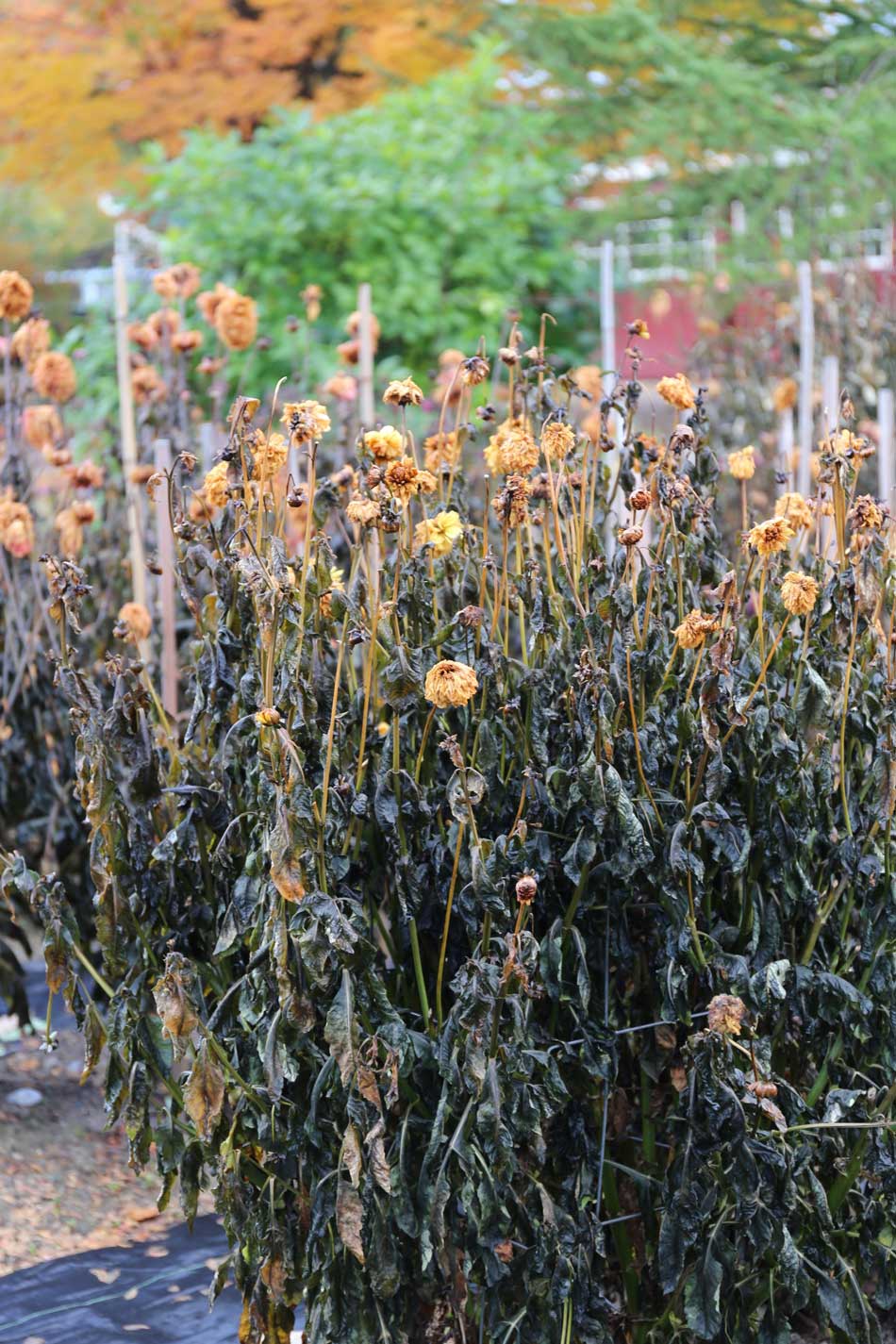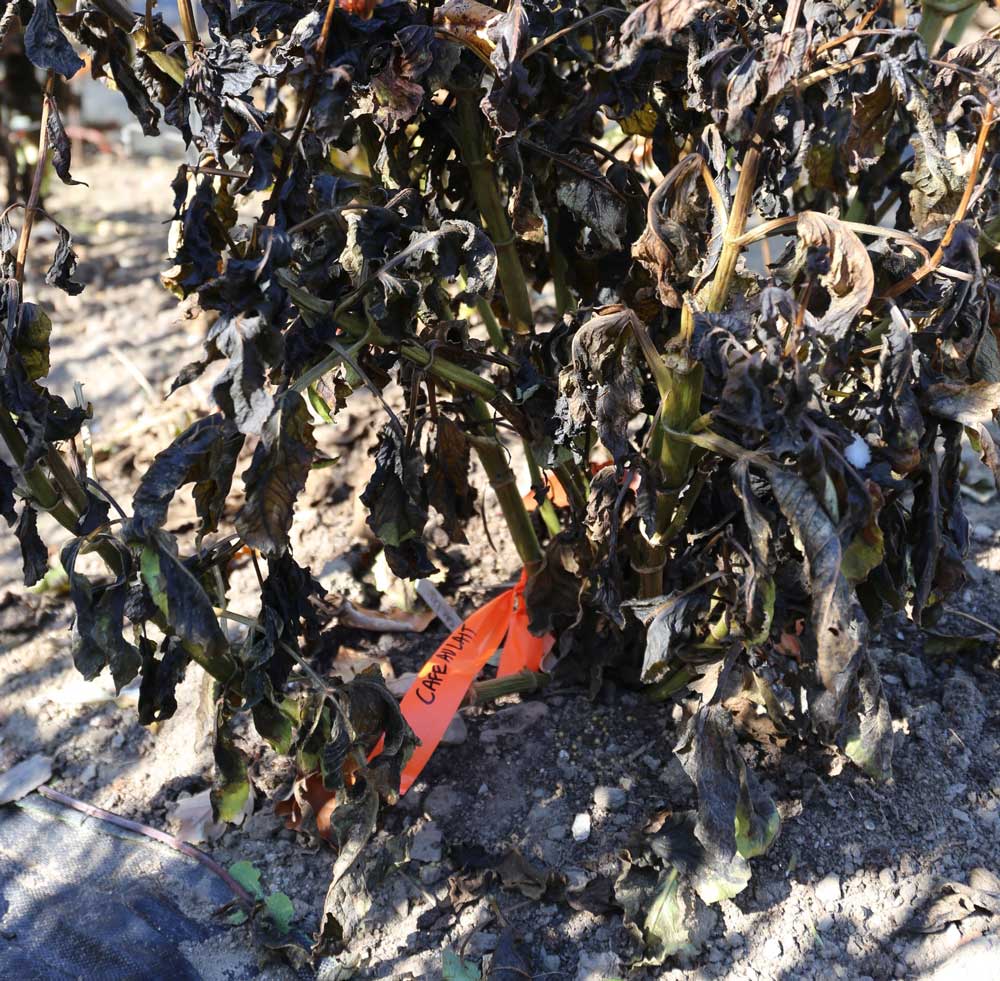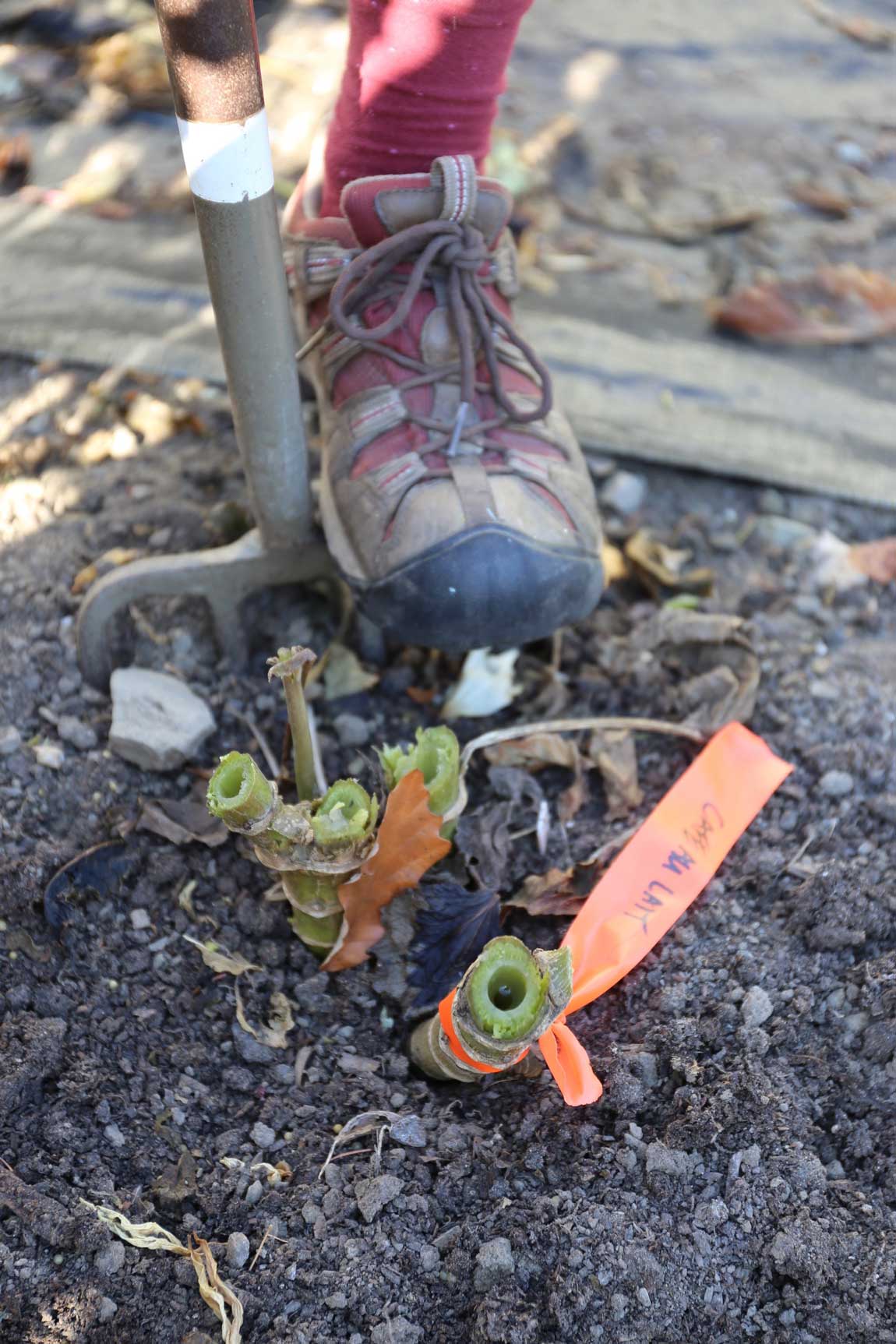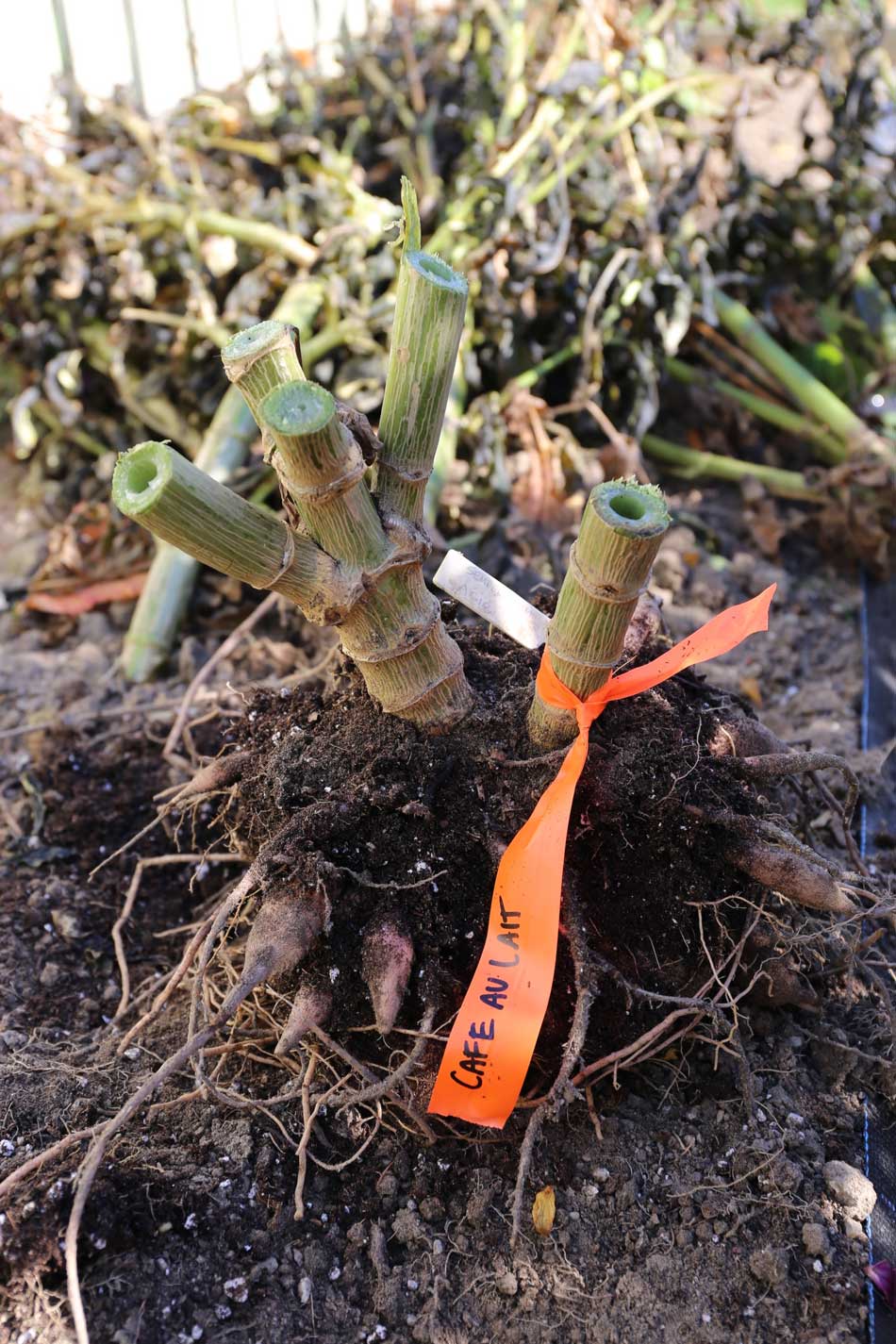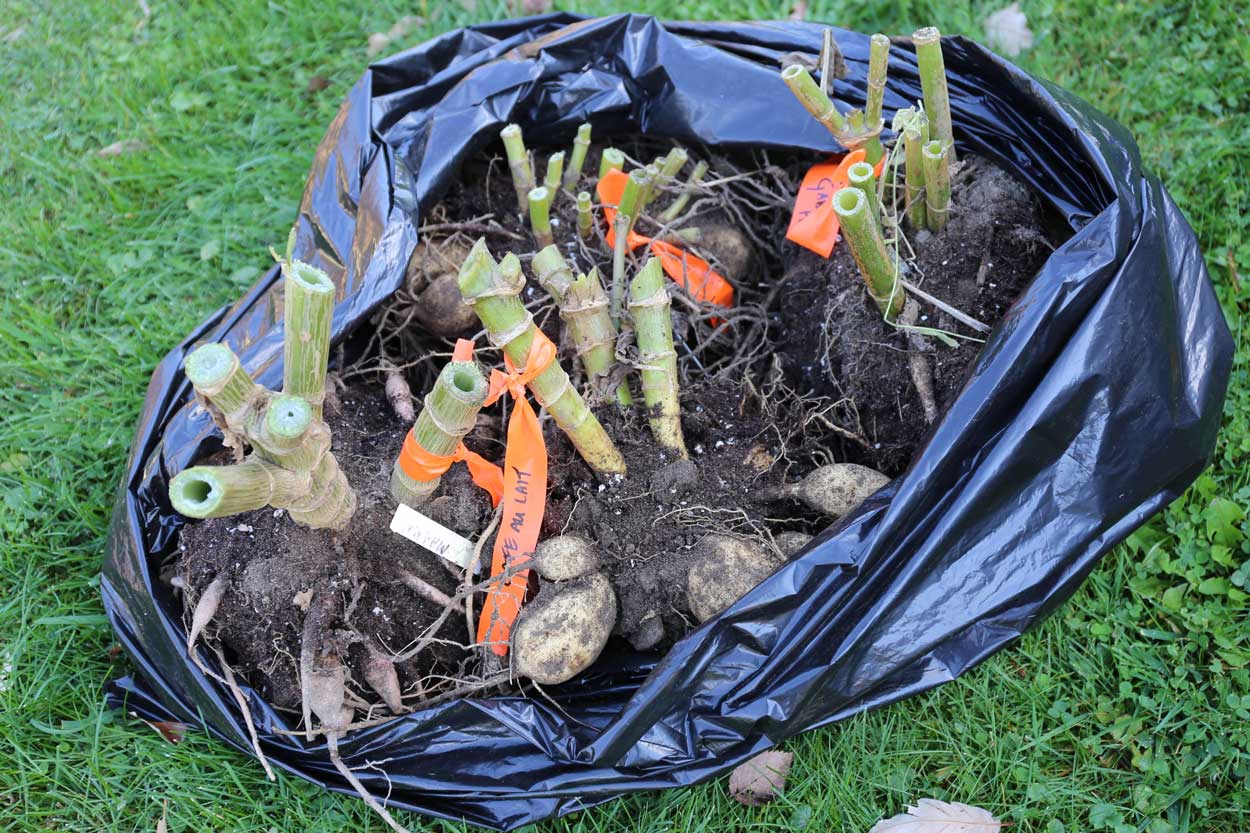How to Overwinter Dahlias
Dahlias are heat loving plants that grow best with lots of sun, 80 to 90 degree temperatures and nice warm soil. Unlike most annuals and perennials, they are at their best in late summer and they keep right on blooming right through the fall.
But as they say, all good things must come to an end, and by late October or early November, dahlias are finally wrapping it up. At this point, you can either treat them as annuals and plant a fresh batch of dahlia tubers next spring, or save the tubers from the varieties you really like and grow them again next year. Overwintering dahlias is easier than you might think. Read on for some easy, step-by-step instructions.
Though the dahlias in the photo above look dead, they’re not. A heavy frost has killed the foliage, but the soil is still warm and has protected the bulbs from freezing. If you live in growing zones 8-10, where winter temperatures rarely fall below 20 degrees, you can leave your dahlias right in the ground. Simply cut back the foliage, and the plants will start growing again in spring.
In zone 7, dahlias will sometimes survive the winter if the soil is well drained and the area is covered with a thick layer of mulch. But to be perfectly safe, follow the instructions for zones 3-6.
If you garden in zones 3-6, you’ll need to dig up your dahlia bulbs and store them indoors. For this task you need pruning shears, a shovel or digging fork, survey tape and marker, damp growing mix, and some big nursery pots, black plastic trash bags or large boxes. Here’s how to do it:
How to Dig Up Your Dahlia Tubers
LABEL. Start by labeling your plants with survey tape (plant labels are too easily lost). If your plants aren’t labeled, be sure to do this BEFORE you get a frost so you can still see the flowers. Save only the varieties that really impressed you.
CUT BACK. After the first hard frost, cut back all the stems to within 4” of the ground. If your dahlias are in containers, skip down to number 6.
DIG. Dig up and remove the entire root ball. Start digging at least a foot away from the stem. The root ball may have a diameter of 12” to 30” and may be 18” deep. Go slow and be gentle as the tubers are extremely brittle. Damaged tubers are likely to decay.
DRY. Let the clumps air dry for a day or two, protected from direct sun and frost. Adjust the labels or ties so they’re securely attached. I don’t recommend washing the soil off the tubers. Just store the entire root ball as it came out of the ground. I also wait until spring to divide the tubers. I don’t have time to do it in the fall and I also find that the undisturbed root balls seem to store better.
Packing and Storing Your Dahlias
PACK. You can store the root balls in several ways. You can plant them in large nursery pots with damp potting soil. Or store them in ventilated cardboard boxes or plastic tubs that are partially s with damp growing mix, peat moss or vermiculite. I usually store several clumps together in large black plastic trash bags. I don’t seal the bags, just loosely gather the top so moisture stays in, but there’s still some air circulation.
STORE. Store the pots, boxes or bags in a cool, dark, humid place where the temperature will stay between 40 and 50 degrees F. An unheated basement is ideal. In zones 5 and 6 you may be able to keep them in an attached garage. Just make sure the tubers don’t freeze. A frozen tuber is a dead tuber.
CHECK. Check on your dahlias periodically through the winter. If conditions are too moist, there may be some mushy tubers. Remove them and reduce the moisture level. If the tubers are wrinkled, rehydrate them by misting or surrounding them with some damp growing.
What to Do When Spring Arrives
In early March, go through all of your saved dahlias and discard any tubers that look like they didn’t make it. Then start dividing the root balls into manageable clumps. If this is your first time dividing dahlias, just make sure each tuber includes several sprouts, also known as growth eyes or growth buds. These occur near where the tuber meets the stem (note the small, rounded bumps and little white nub in the photo below). To be safe, just divide the root ball into a couple large clumps, leaving some of last year’s stem attached to each clump.
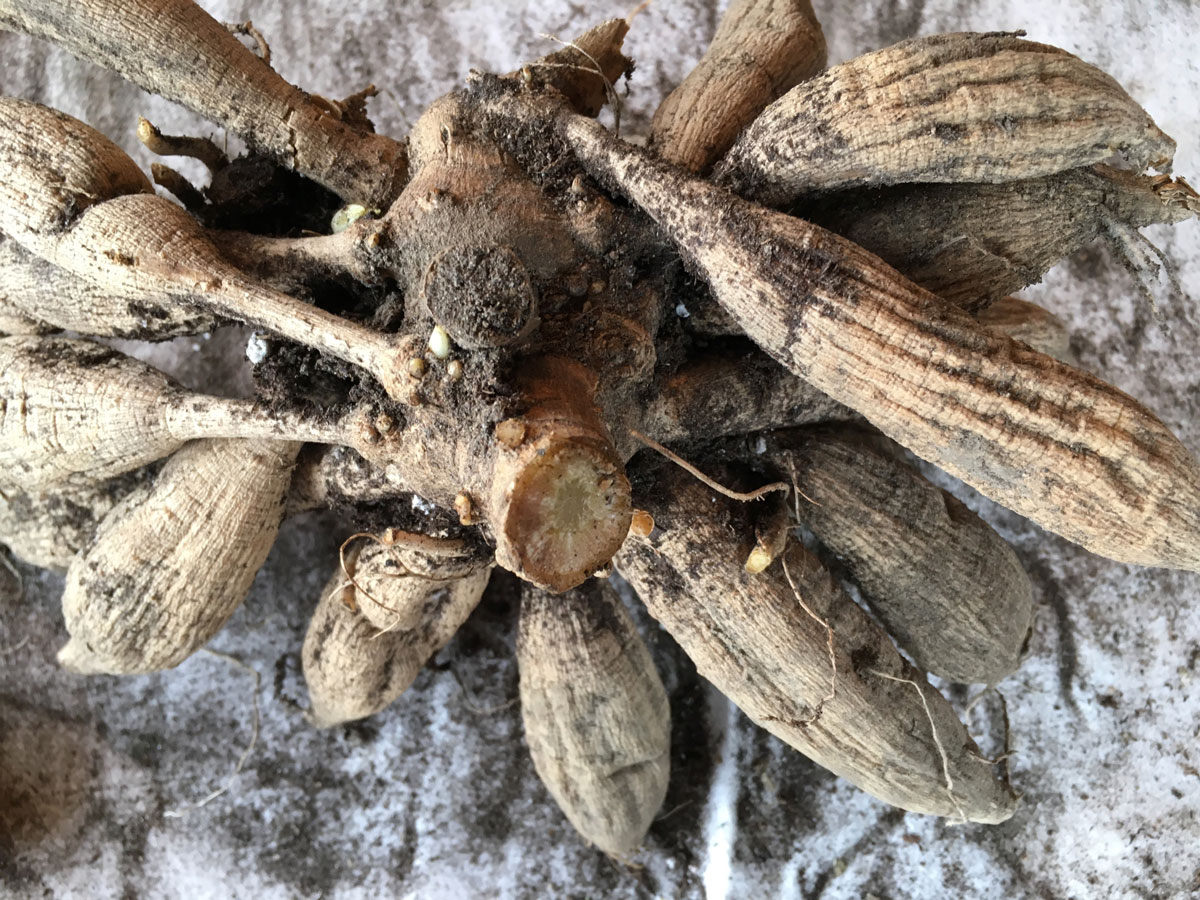
To learn more, watch our bulb expert Hans Langeveld in this video: How to Lift and Store Dahlias. You may be interested in: All About Dahlias, How to Pinch and Stake Dahlias, How to Plant Dahlias (video) and Dahlias: 8 Great Looks.

